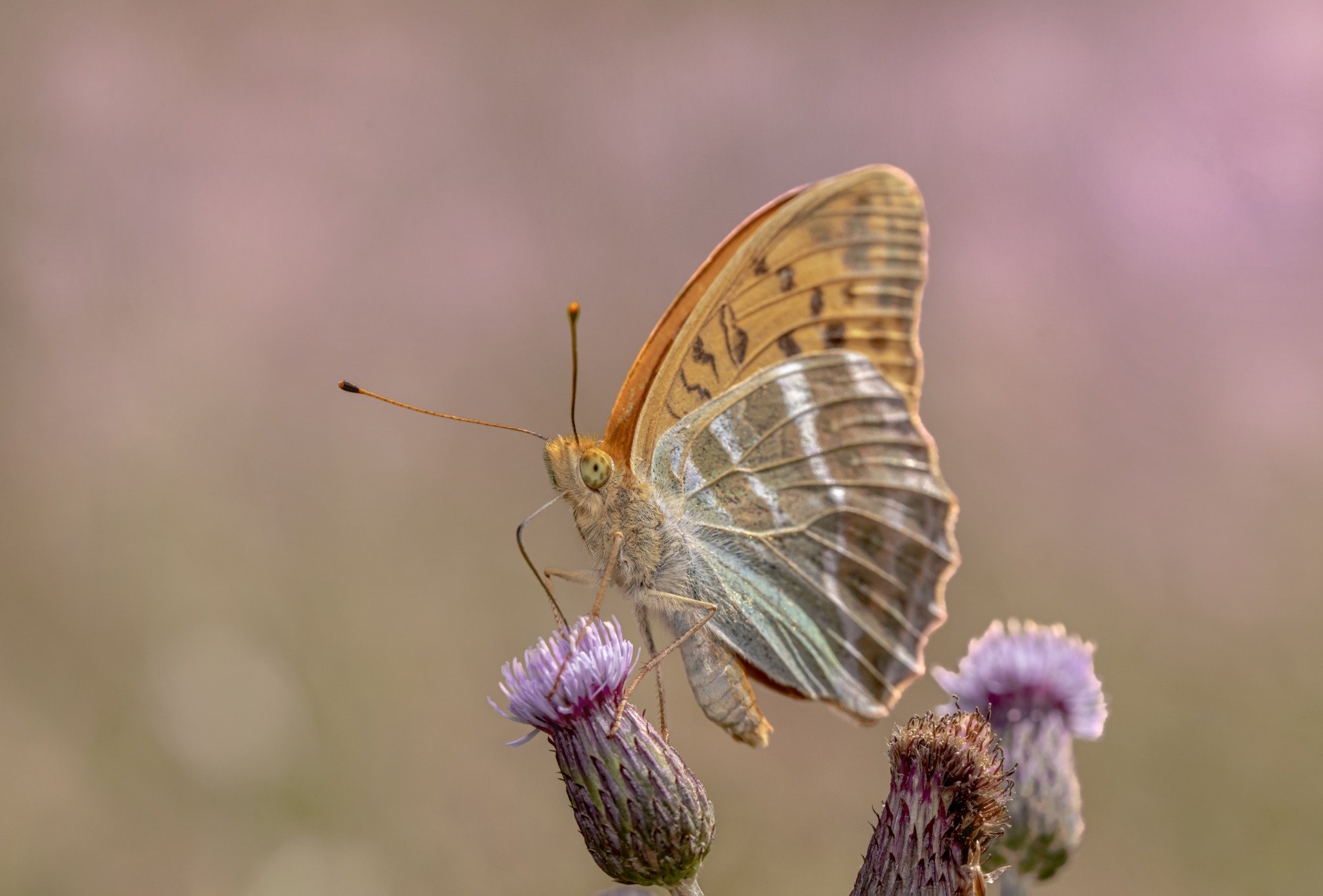The Silver-washed Fritillary (Argynnis paphia) is a captivating butterfly species belonging to the family Nymphalidae, known for its striking appearance and graceful flight. Here’s a detailed description:
Physical Characteristics: The Silver-washed Fritillary is a large butterfly, with a wingspan typically ranging from 65 to 75 millimeters. Its wings feature a distinctive pattern of orange and black markings, with prominent silver streaks or patches on the underside of the hindwings, from which it derives its name. The upper side of the wings is predominantly orange with bold black markings and veins, while the undersides are paler with intricate patterns of spots and lines.
Habitat and Distribution: Silver-washed Fritillaries are commonly found in broadleaf woodlands, forest edges, and meadows across Europe and parts of Asia. They prefer open habitats with abundant sunlight and nectar-rich flowers, where they can bask and feed. They are particularly abundant in temperate regions with deciduous trees, such as oak, birch, and beech forests.
Behavior and Life Cycle: Silver-washed Fritillaries are diurnal, meaning they are active during the day, especially in warm and sunny weather. They are strong and agile flyers, often gliding and soaring through the forest canopy in search of nectar and mates. The females lay eggs singly on or near the larval host plants, which typically include species of violets (Viola spp.). The caterpillars hatch from the eggs and feed on the leaves of the host plants before pupating and emerging as adult butterflies.
Conservation Status: The Silver-washed Fritillary is not considered globally threatened and is generally common and widespread throughout its range. However, like many butterfly species, it may face localized threats due to habitat loss, fragmentation, and degradation caused by agricultural intensification, urbanization, and climate change. Conservation efforts focused on preserving and restoring woodland habitats, protecting larval host plants, and minimizing human disturbance are crucial for ensuring the long-term survival of this iconic butterfly species.
Overall, the Silver-washed Fritillary is a beautiful and ecologically important butterfly species, valued for its striking appearance, graceful flight, and role in pollination and ecosystem functioning. Its presence adds vibrancy and vitality to natural landscapes and serves as a symbol of the rich biodiversity of the regions where it is found.
Views: 12
Subscribe to the newsletter:
